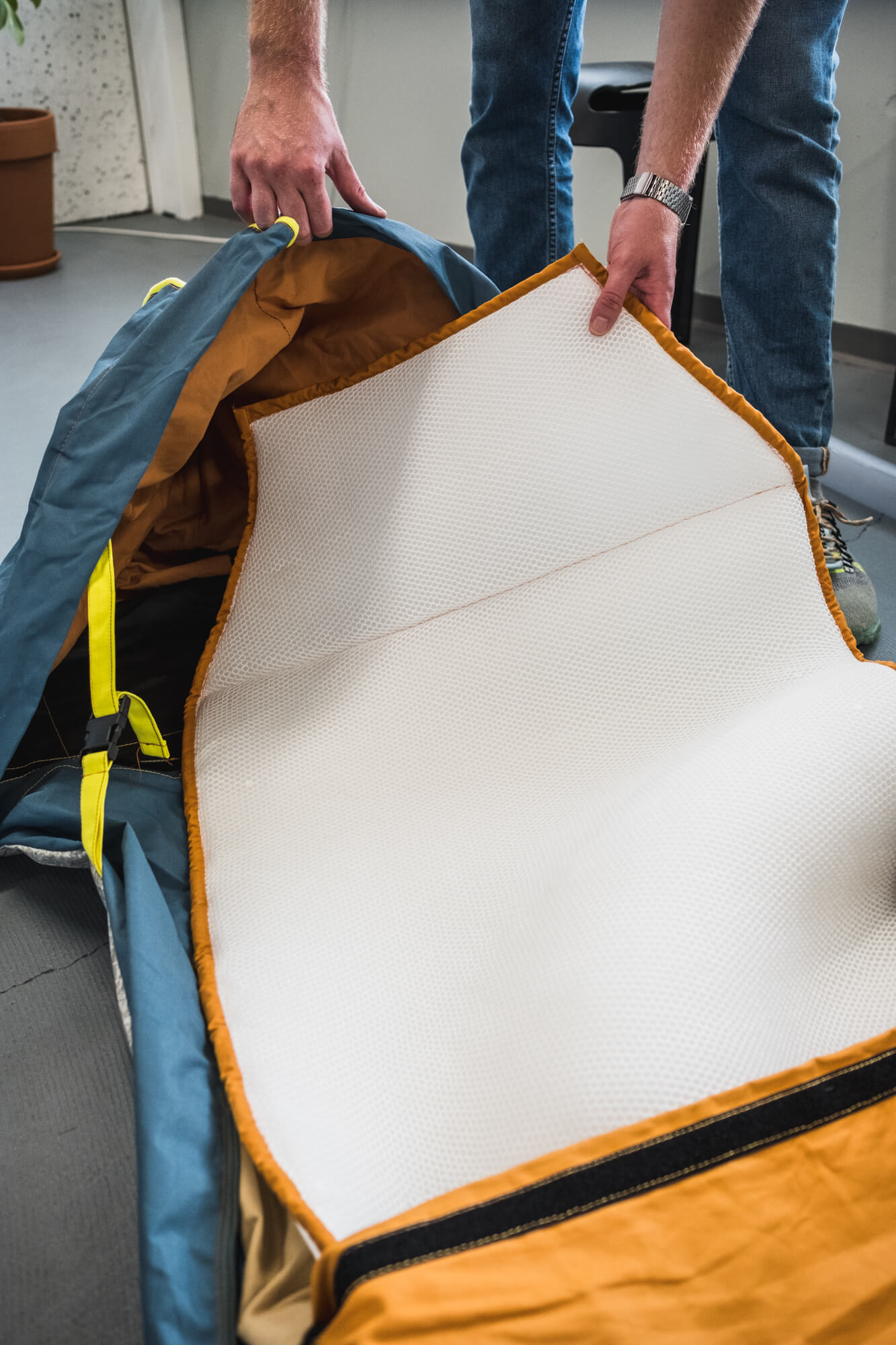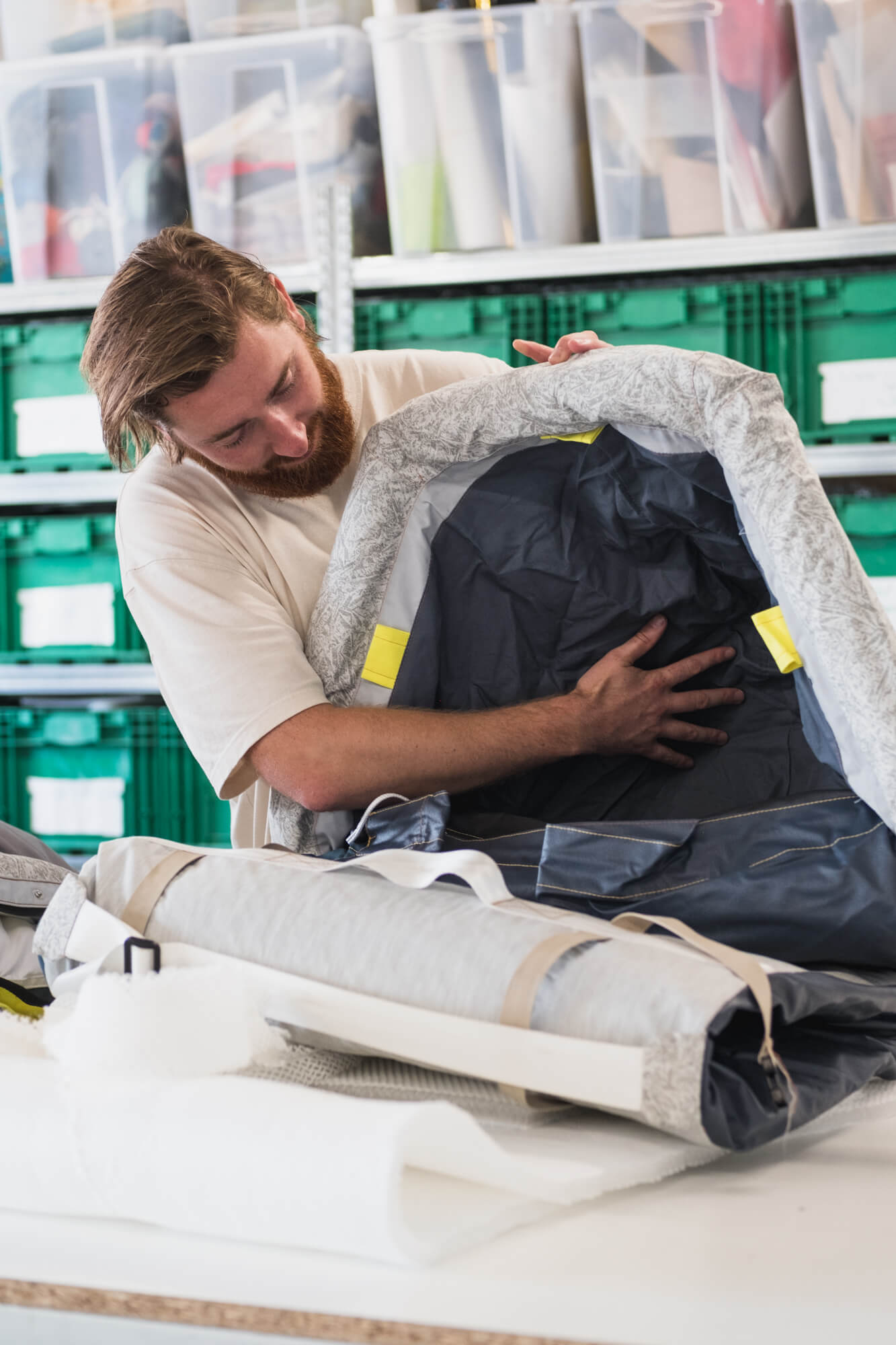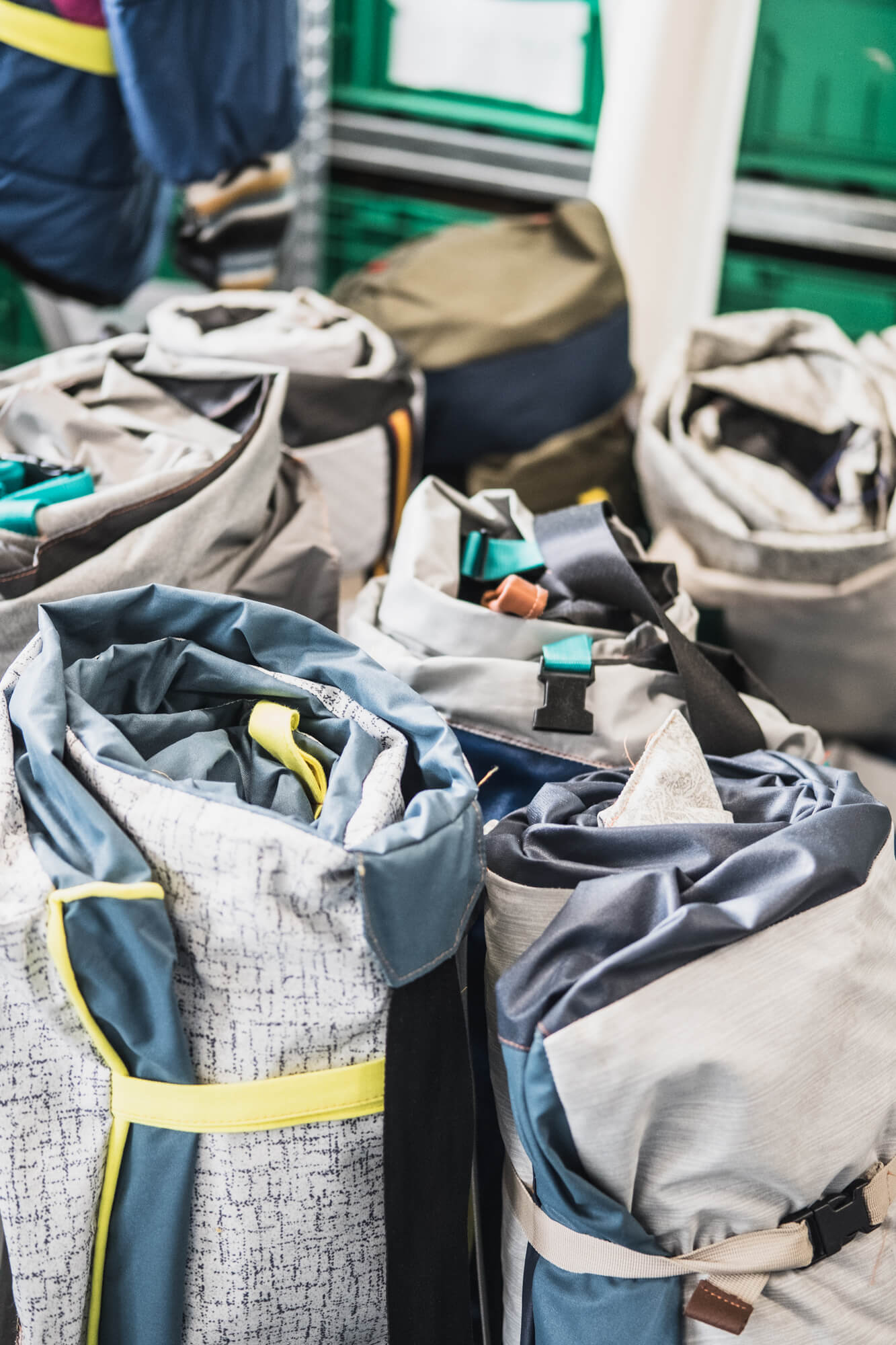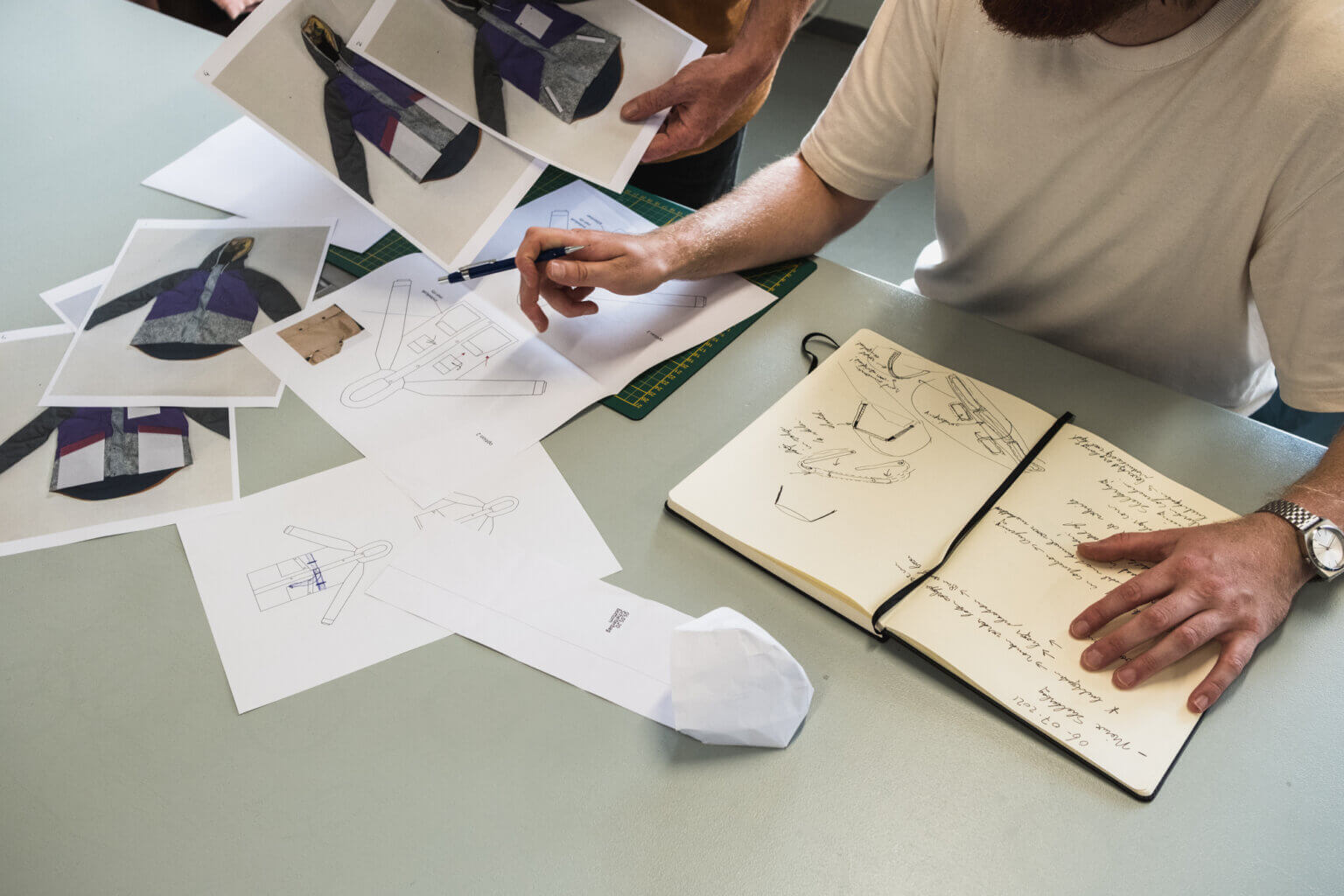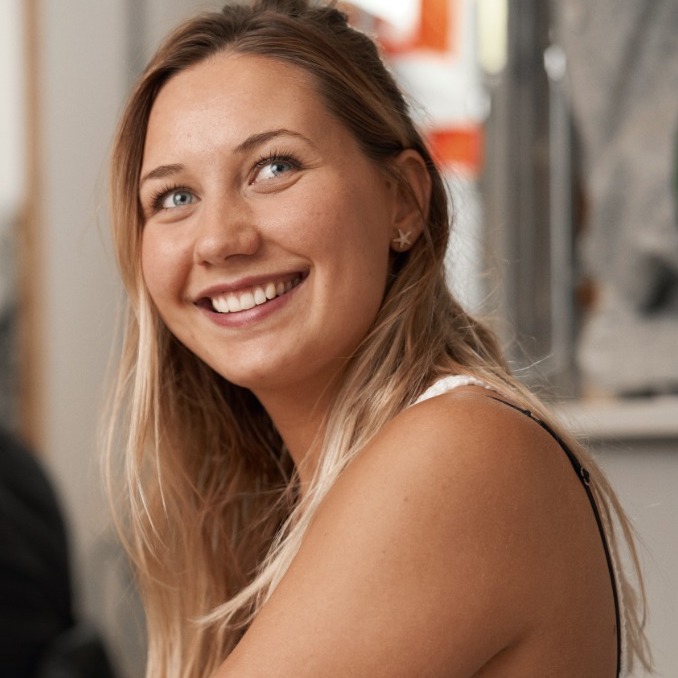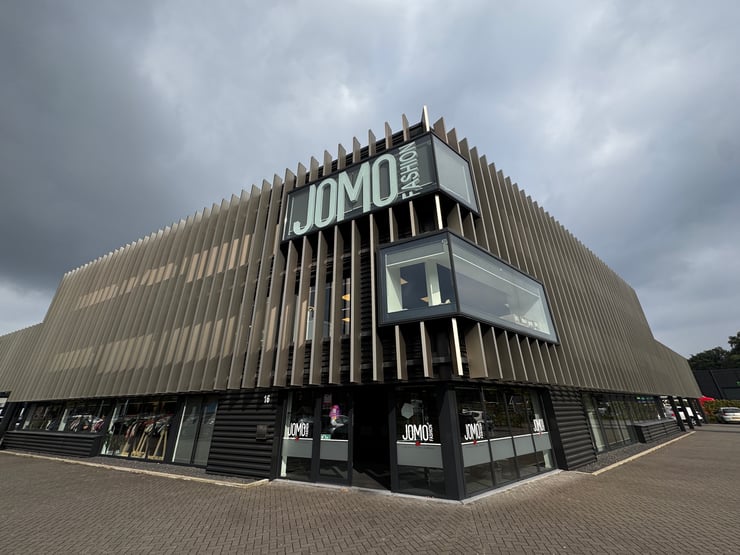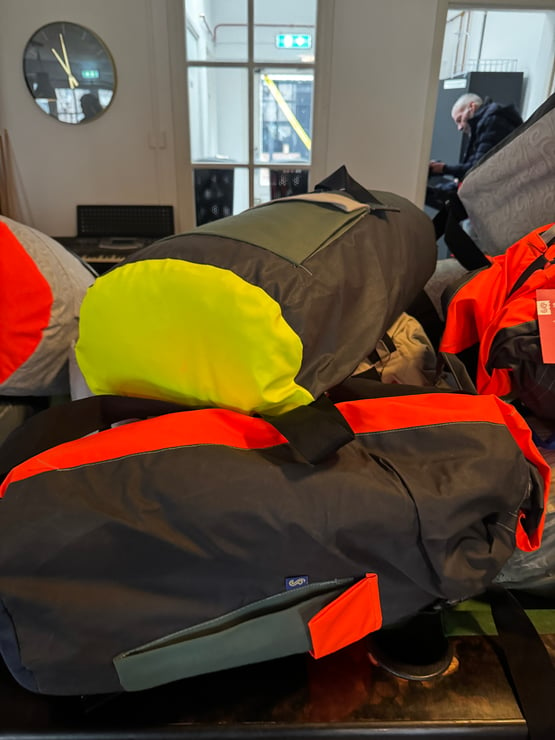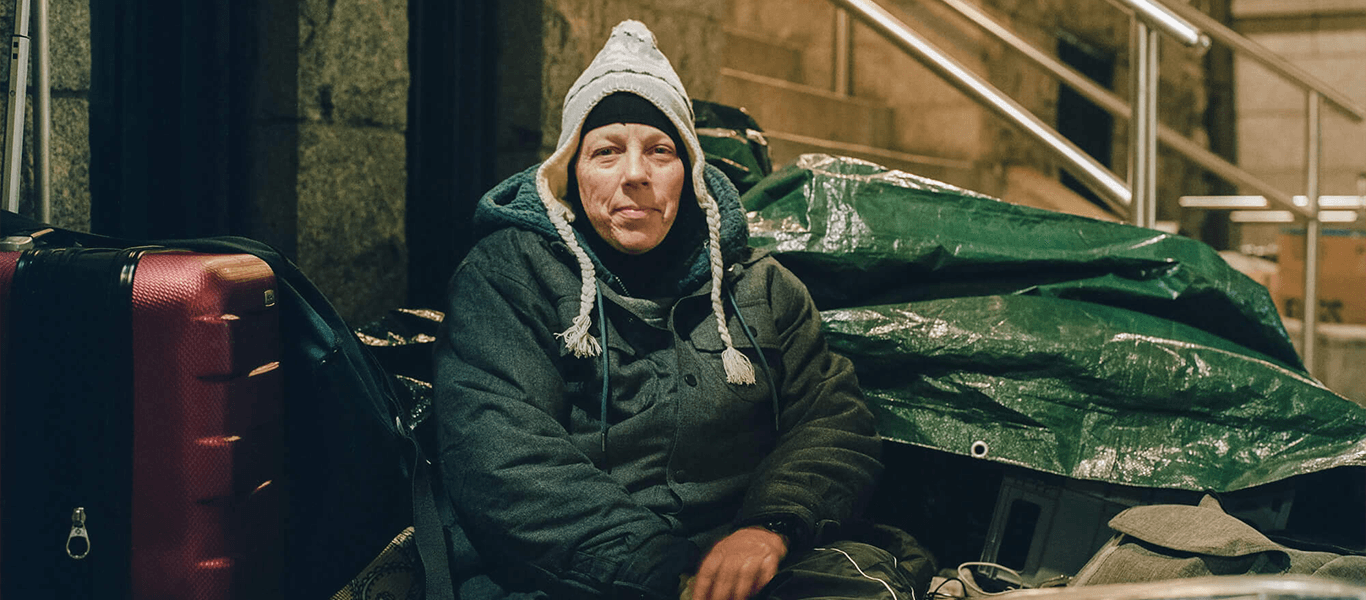Sheltersuit exists to help ease the symptoms of people experiencing homelessness. By listening to the people that are using our products, we determine the need and evaluate the results. Then, we do our best to convert that input into practice and incorporate it into the production process.
The Shelterbag is a portable, sheltered bed that rolls up into a bag. It is waterproof, lightweight, easy to handle, and has an extra compartment for some personal items. It comes with a sleeping bag and a built-in pillow but also has room for an extra mattress or blanket, making it adaptable for all seasons. A flexible tent pole is integrated into the hood to keep it upright, providing more space and better shelter from the rain.
A lot has changed since the first Shelterbag was designed in Colombia, two years ago. Bas visited Medellin Design Week in 2018, where he and Dries van Wagenberg (Dutch Design Foundation) spent two weeks designing a product fit for the local climate. The result was a prototype of the first Shelterbag; a lighter, more compact version of the Sheltersuit, suitable for warmer climates.
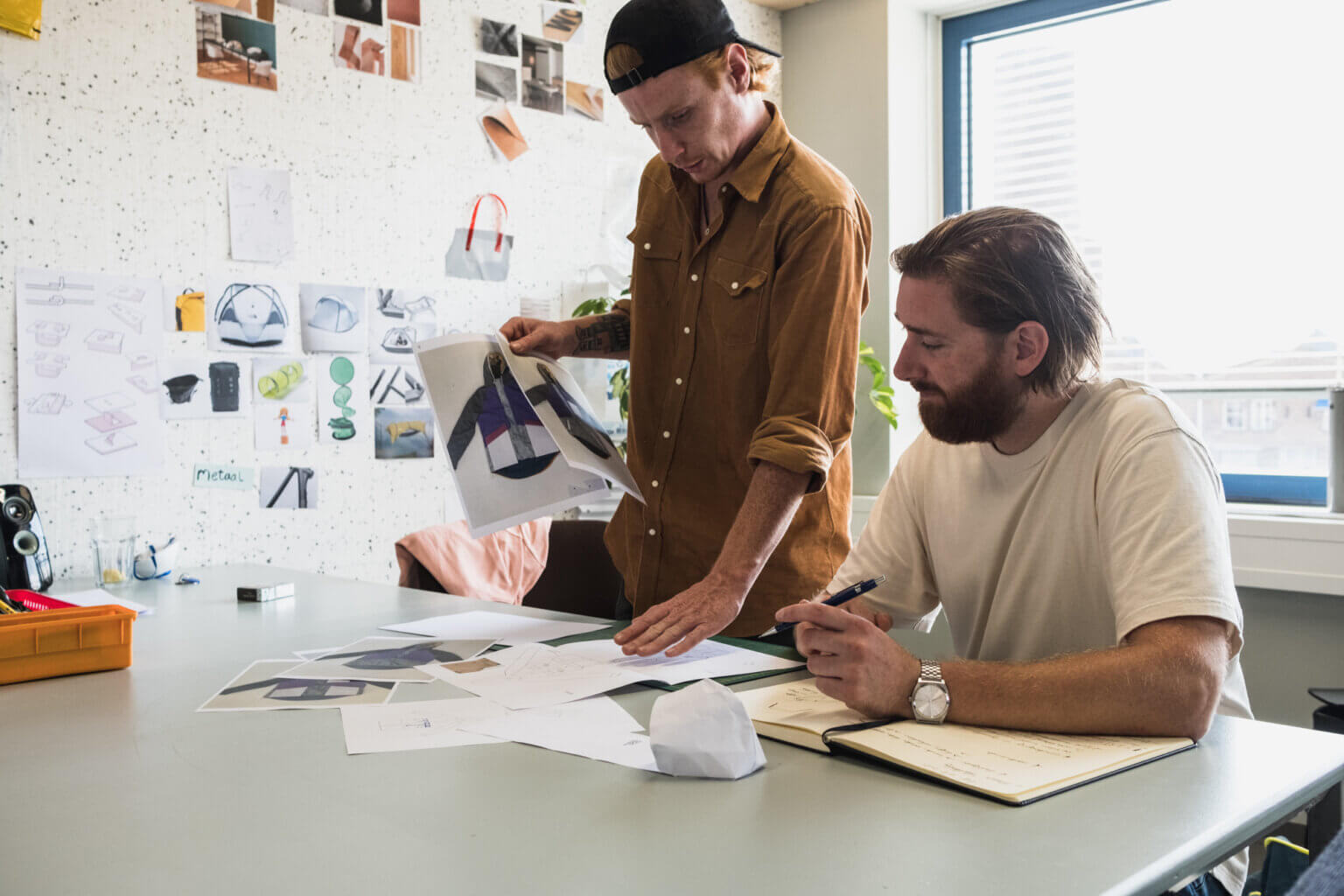
Bas and Joris at work in Joris’ design studio
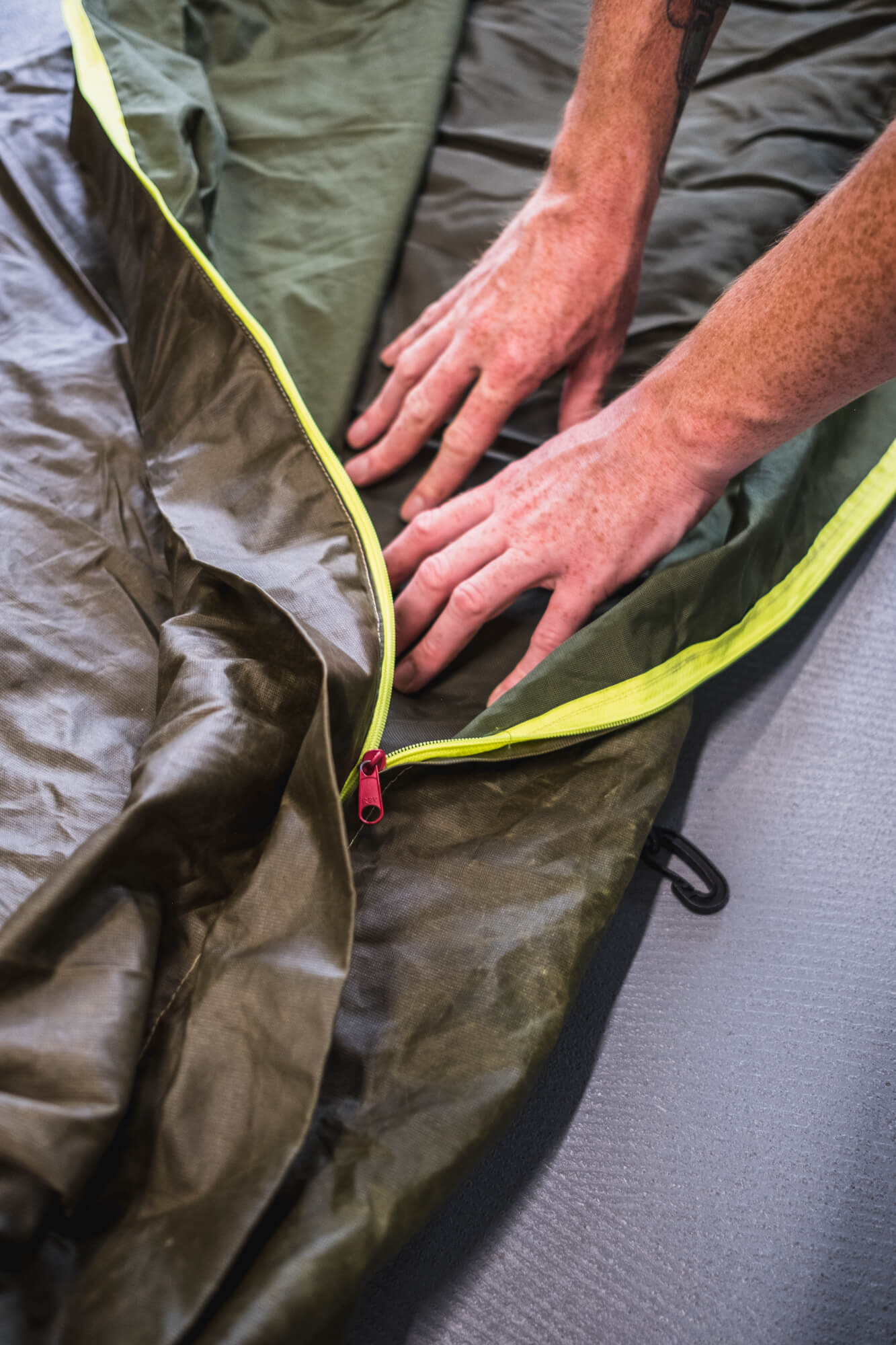
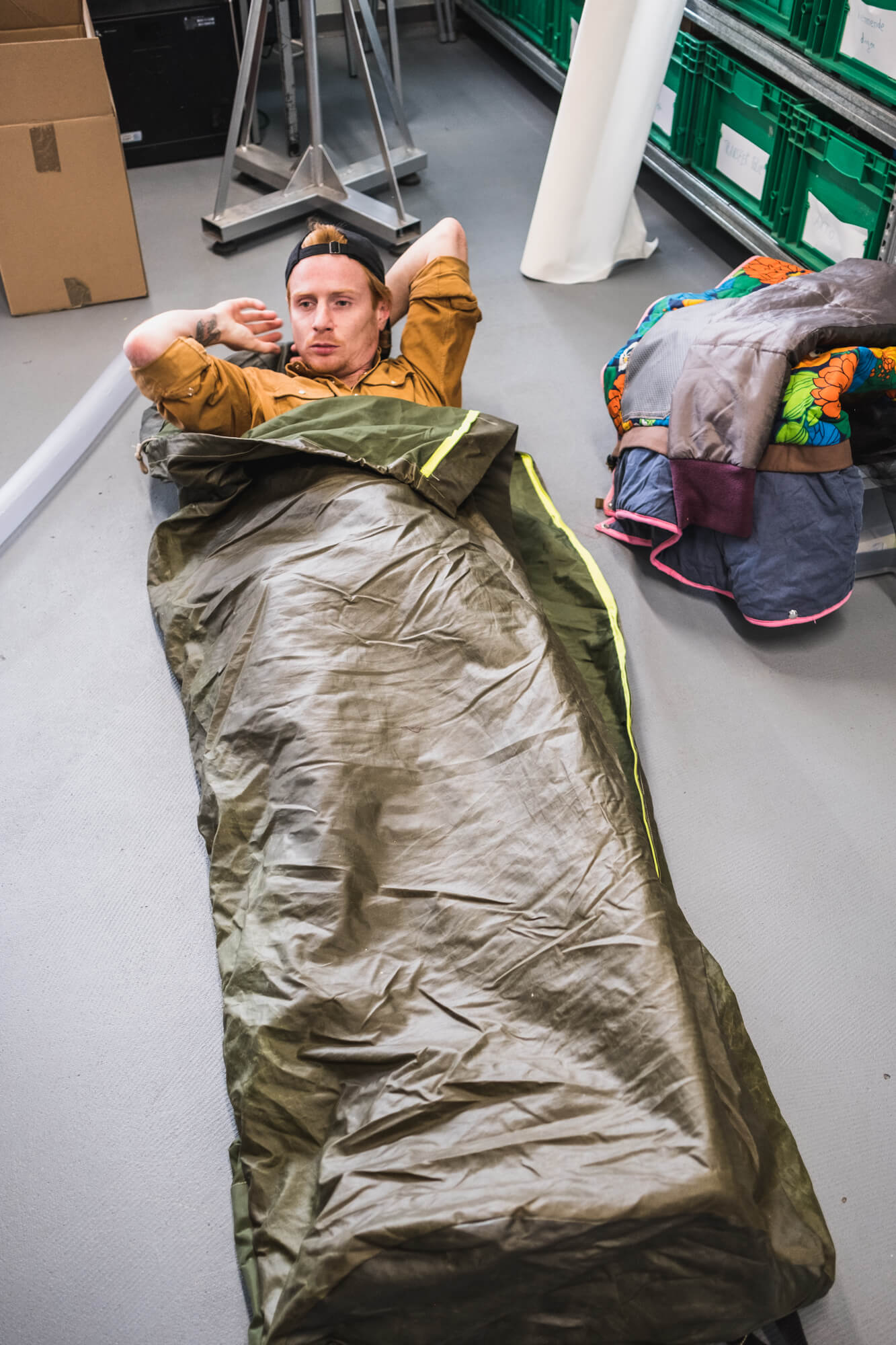
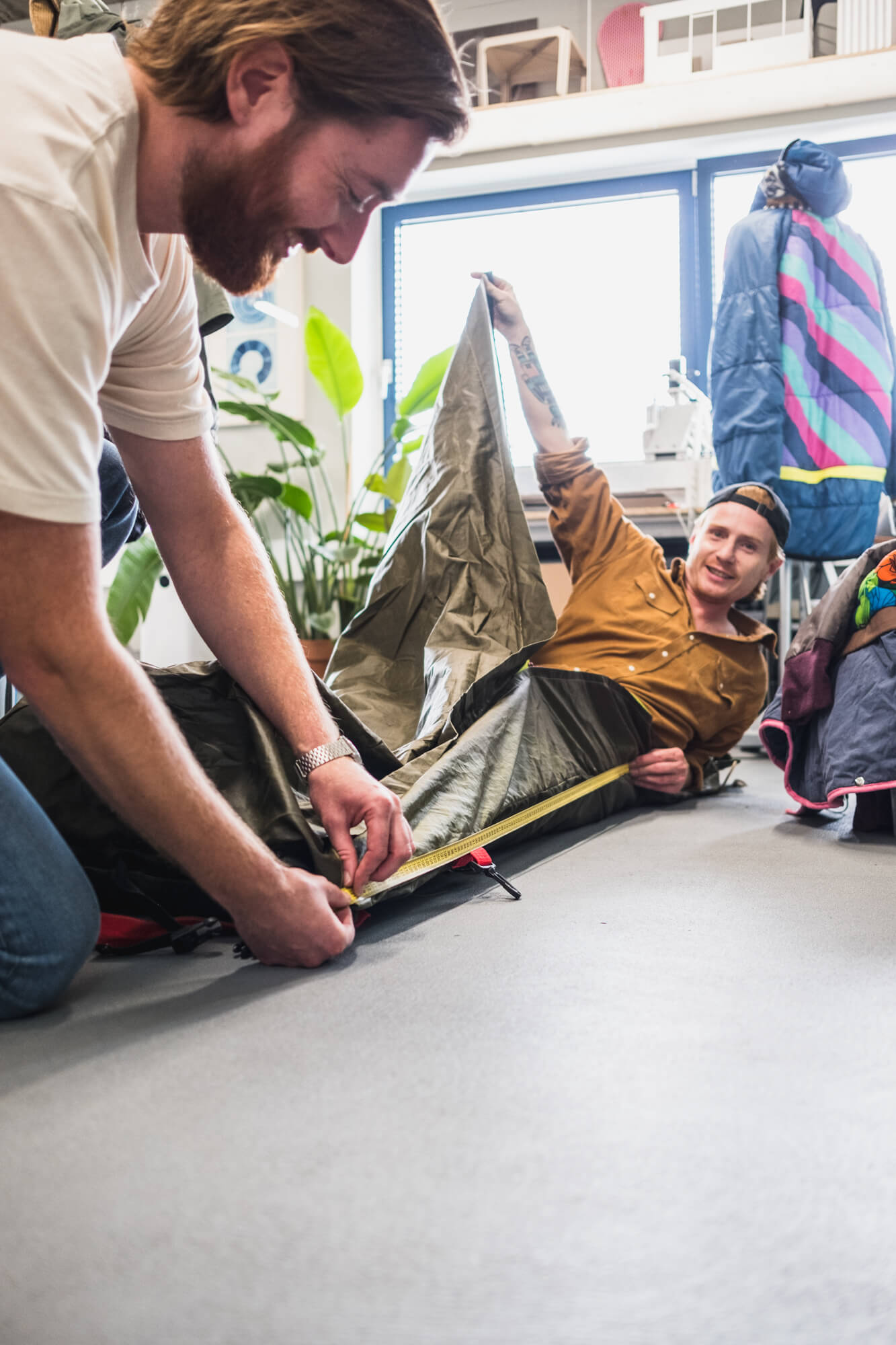
After our first large-scale distribution of Shelterbags in the Netherlands last year, we’ve collected feedback from both outreach organizations and people that have used them.
What did they think? Did they benefit from it? Any suggestions? Or did we miss something?
Designing for people living unsheltered is interesting new territory. We are collaborating with Dutch product designer Joris de Groot, to test and implement a variety of adjustments. Joris specializes in translating input from our users to the production process.
By studying various production processes and companies, Joris assesses the potential of techniques and materials available within Sheltersuit’s factory. He then challenges our production team to explore new possibilities and gain fresh insights.
A big challenge is converting a prototype to production. There are some language barriers, as Arabic is the first language of most people in the Sheltersuit Factory.
“I work closely with Fadi. We found a way of communicating by making miniature prototypes. Then Fadi makes 1:1 prototypes, so we can immediately test them and explore the possibilities in production.
I learn a lot from the skilled people in production at Sheltersuit,” Joris says, “and it’s very valuable to be able to draw from their own experiences, which I think is very important for me as a designer.”
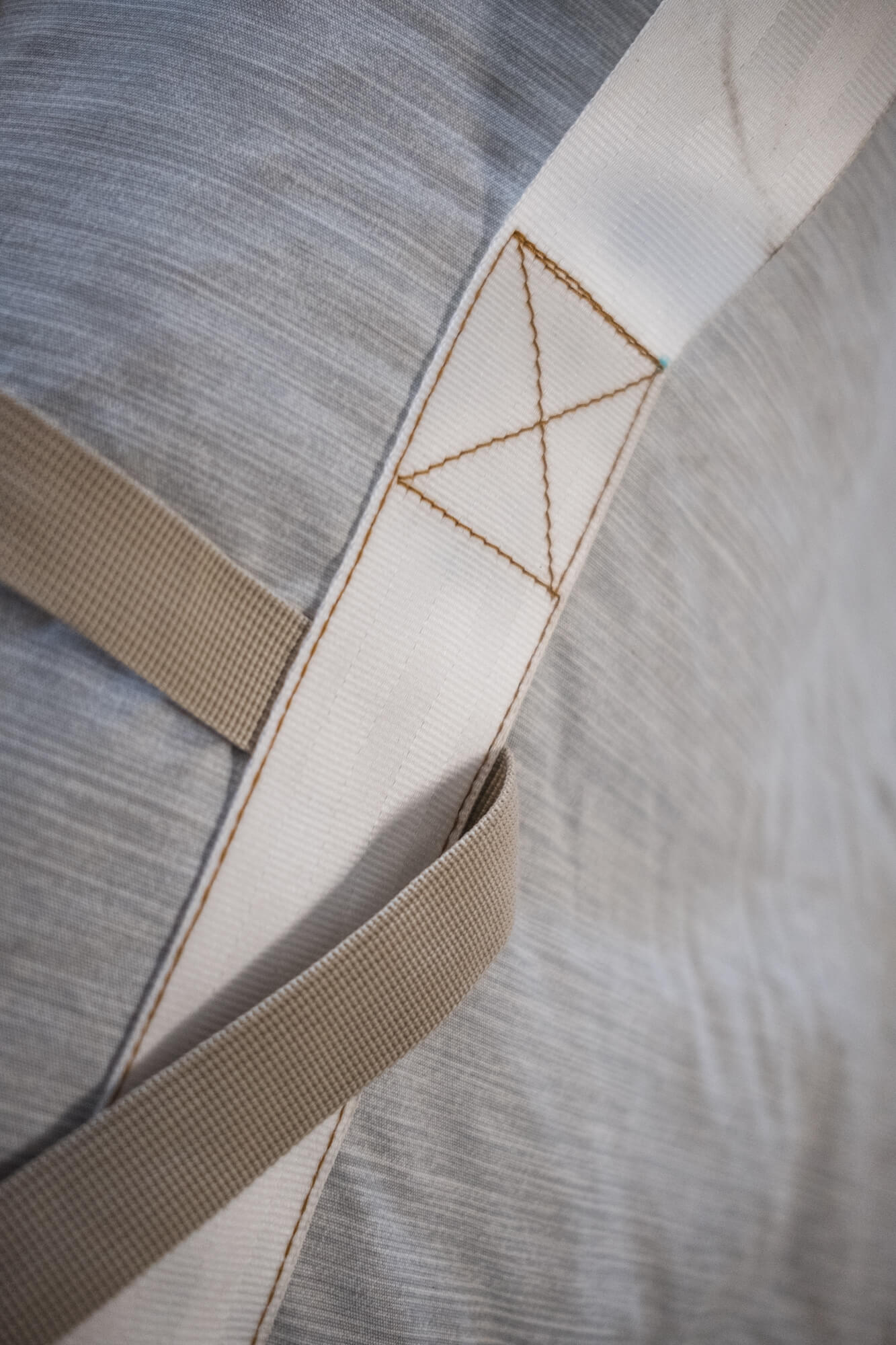

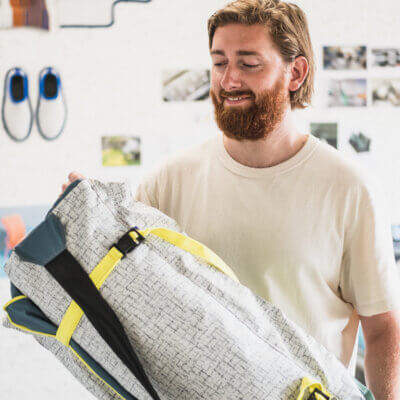

Mini Shelterbag prototypes
“Communication is key here. We make sketches and prototypes. It’s about understanding each other.”
– Joris, Studio Joris de Groot
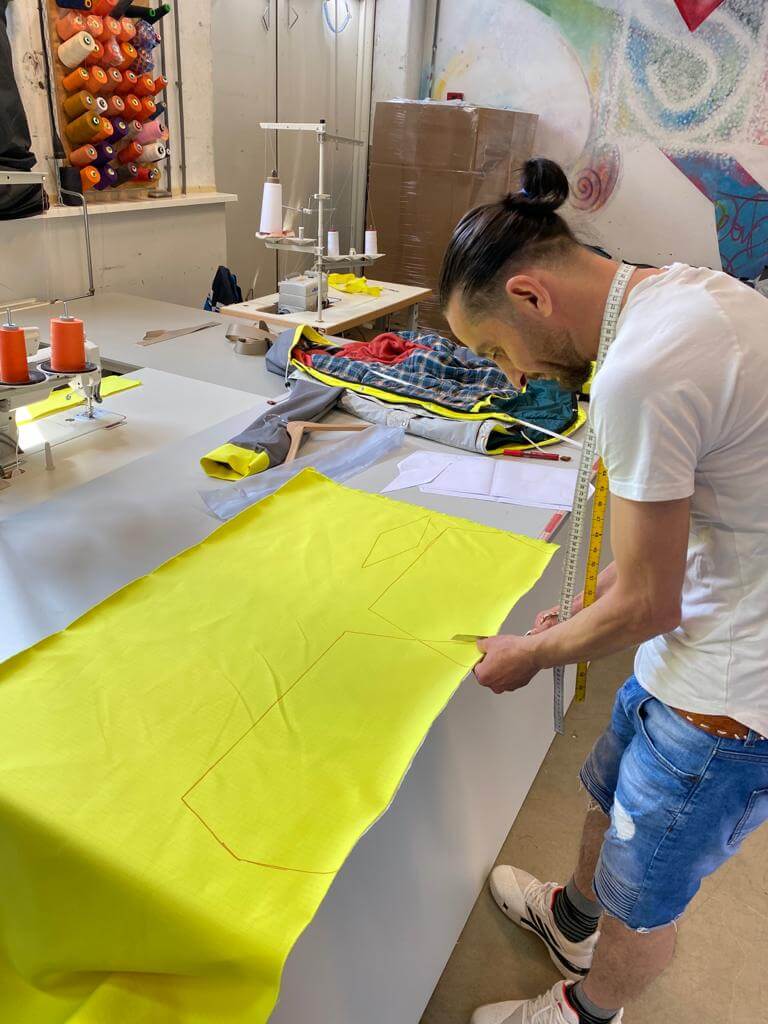
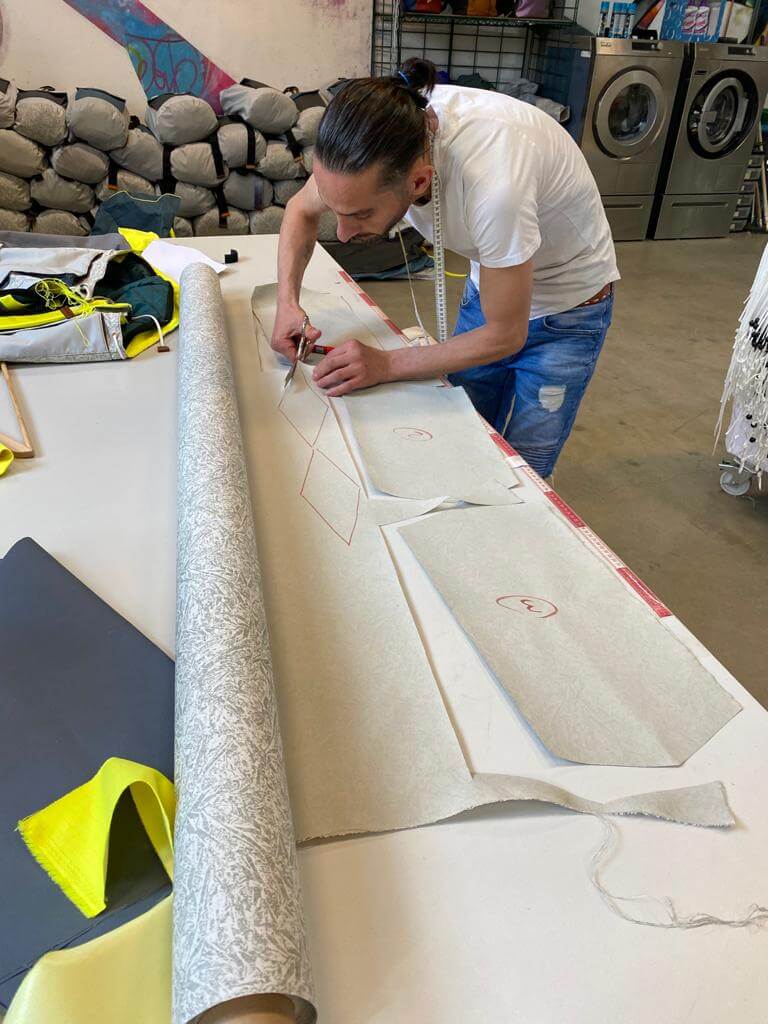
Fadi working on the first prototypes of the new Shelterbag in the Sheltersuit Factory.
Joris: “When I first started at Sheltersuit, I thought; ‘let’s just make the most comfortable product possible.’ But then the mattress became much too heavy.”
It is always a challenge to find the right balance between comfort and functionality. That is why contact with our users is essential. Joris spoke with Inge and Bjorn, in order to find out how he could best implement the product developments. They have been homeless for 3 years since the night shelter is not set up for couples.
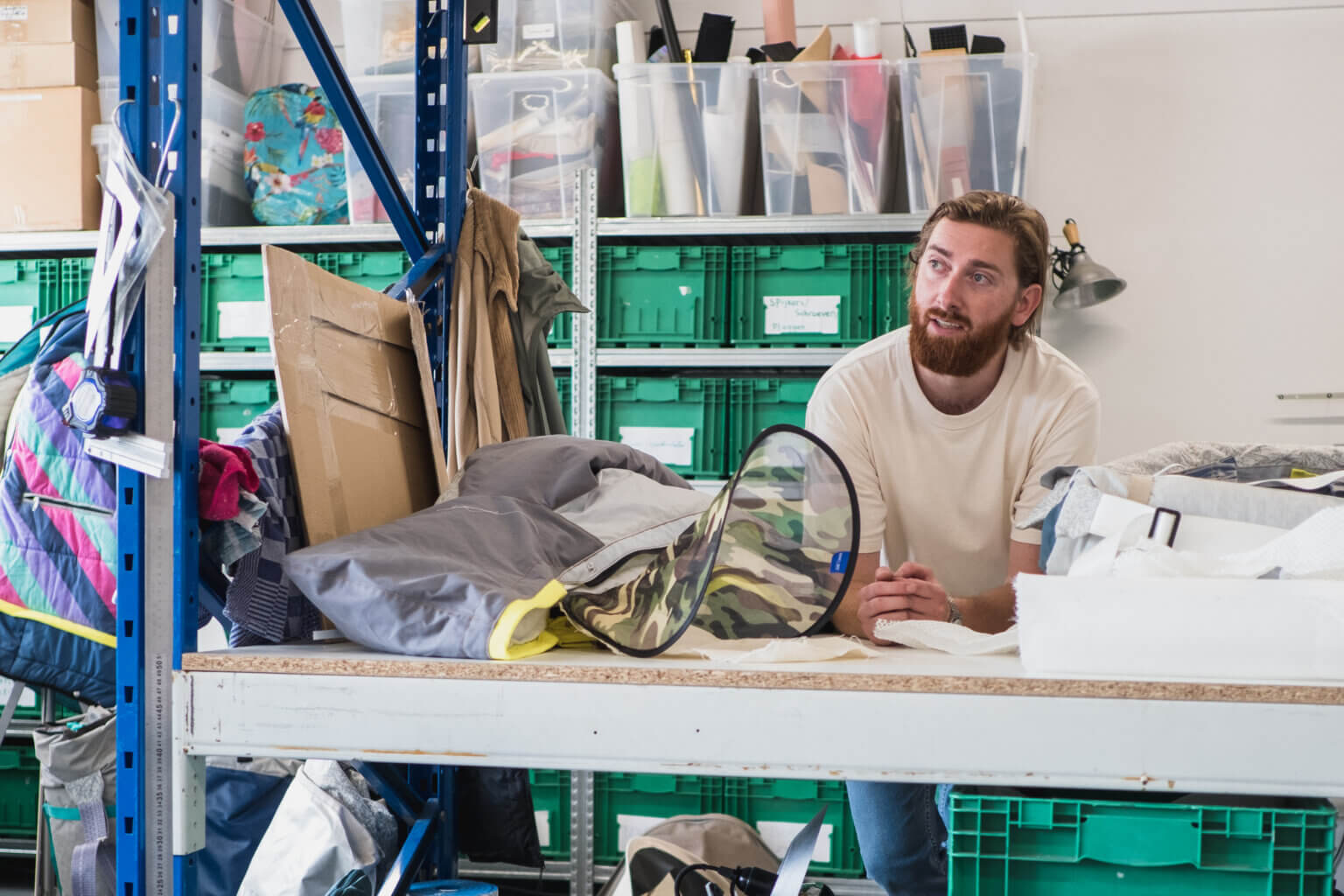
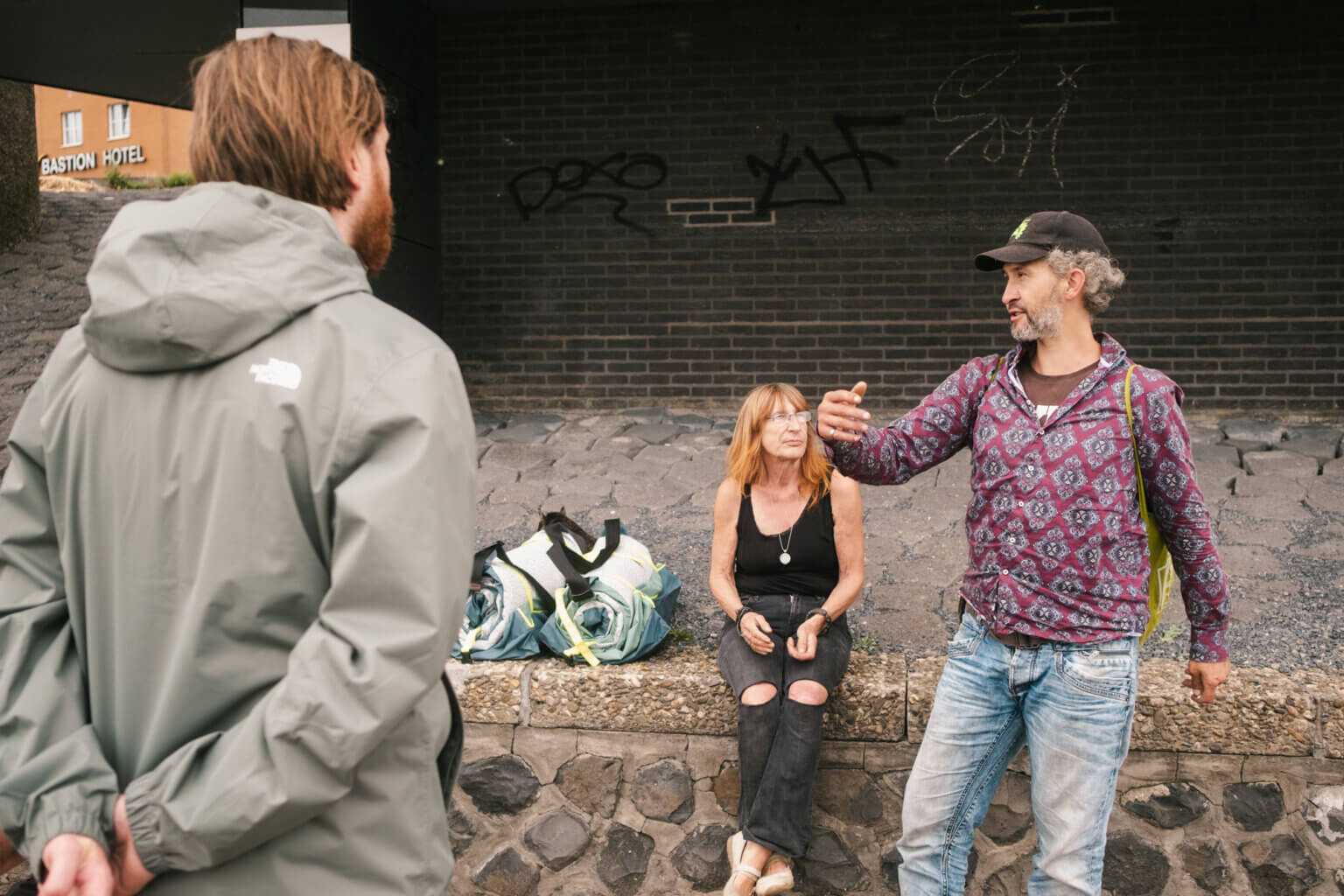
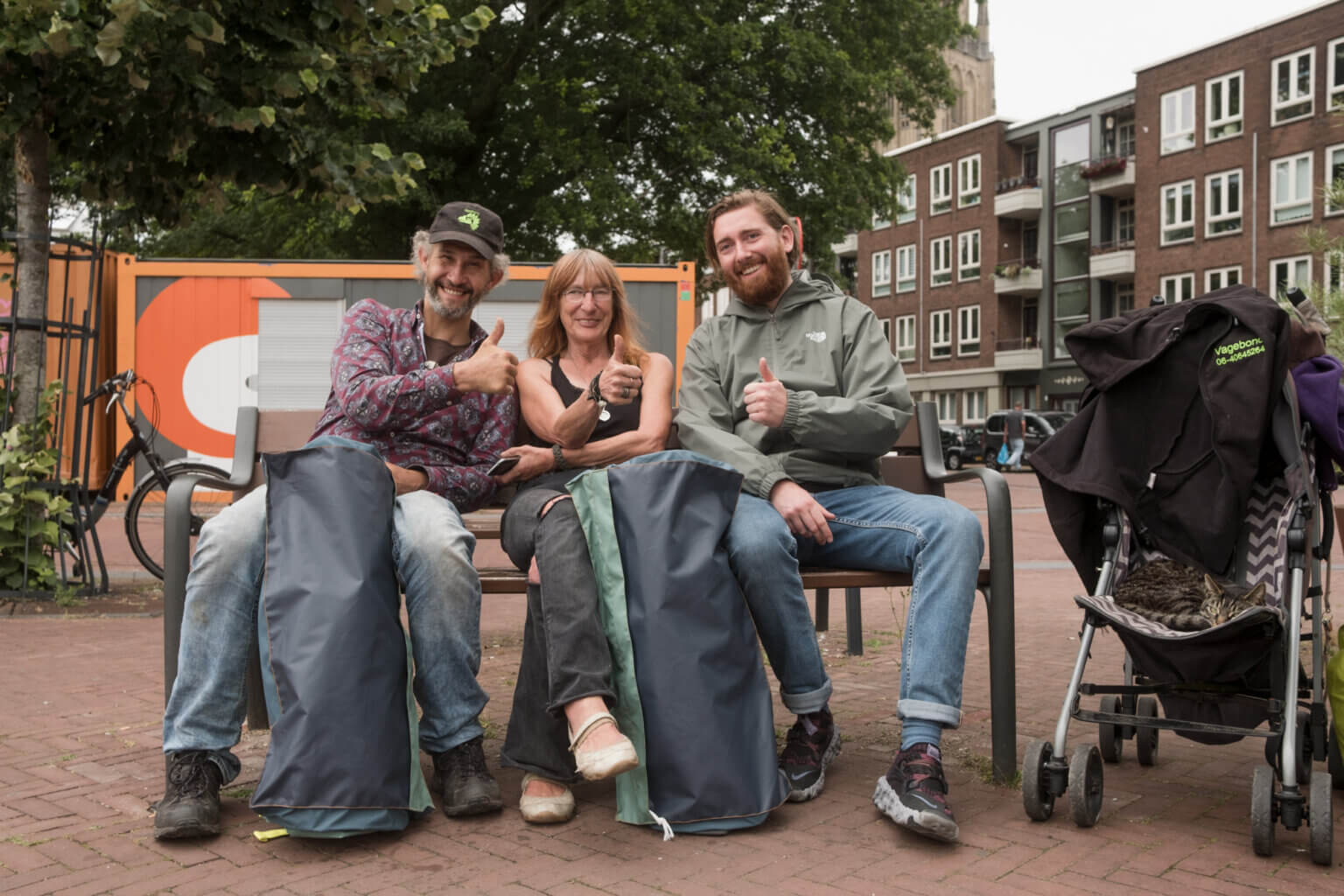
“At Sheltersuit you’re able to use your design skills immediately. There really is a need for a certain product, and you can meet that demand with the resources you have at your disposal.
The inflatable hood
An example of one of the things Joris has tested is this inflatable rim that keeps the hood of the Shelterbag upright. The large hood offers not only protection from the rain but also privacy. The first designs of the Shelterbag had a normal hood, but pretty soon we noticed the need for a little space around your head and a place for your things. Plus, when it rains, the water flows better when the hood is upright.
Not all ideas work. The inflation system turned out to be inconvenient. The plastic of the tube decomposes as soon as it comes into contact with alcohol. Not convenient for people on the street.
Now the Shelterbag has a foldable tent pole, which can be stored separately, and replaced when necessary.
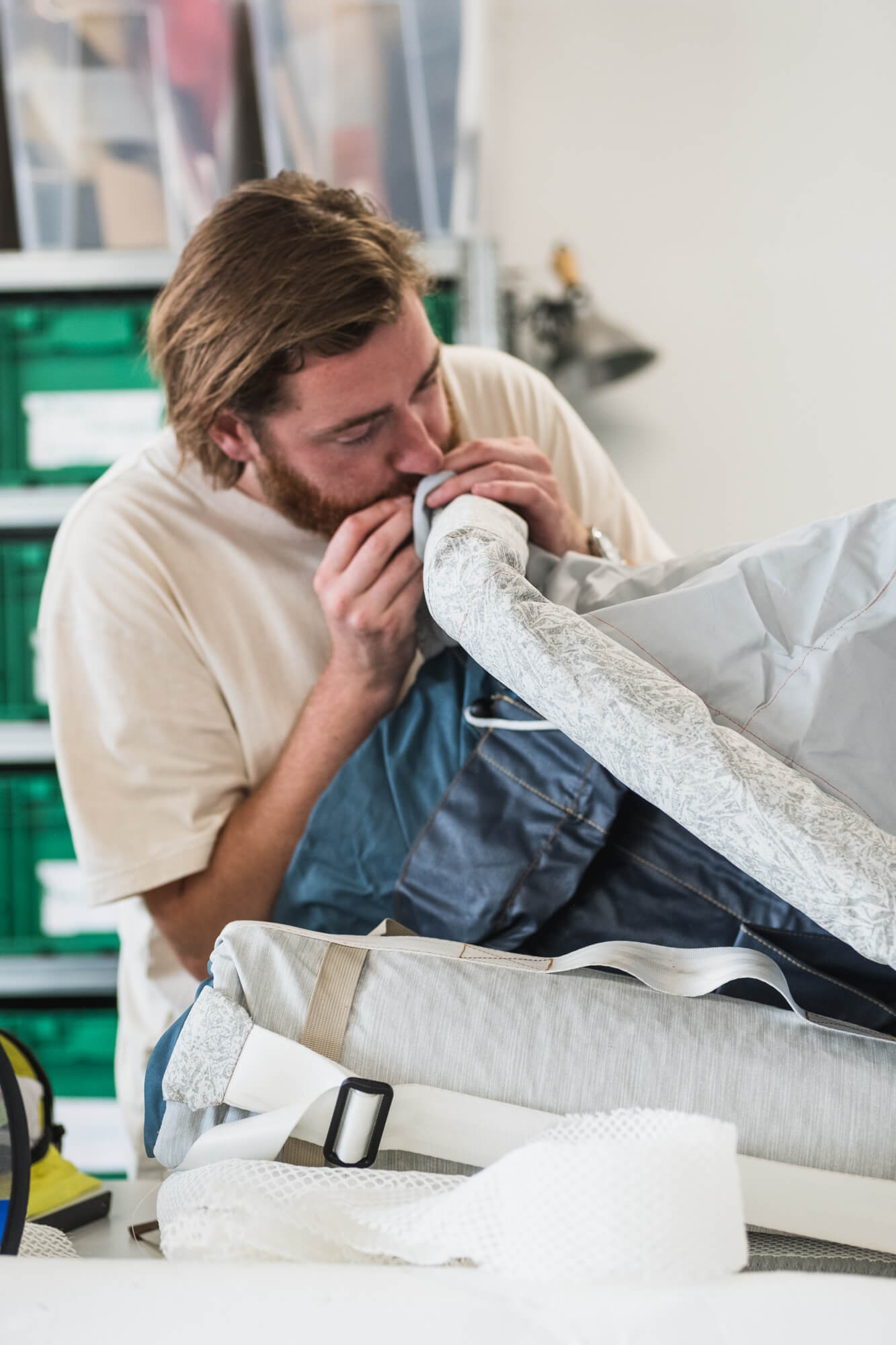
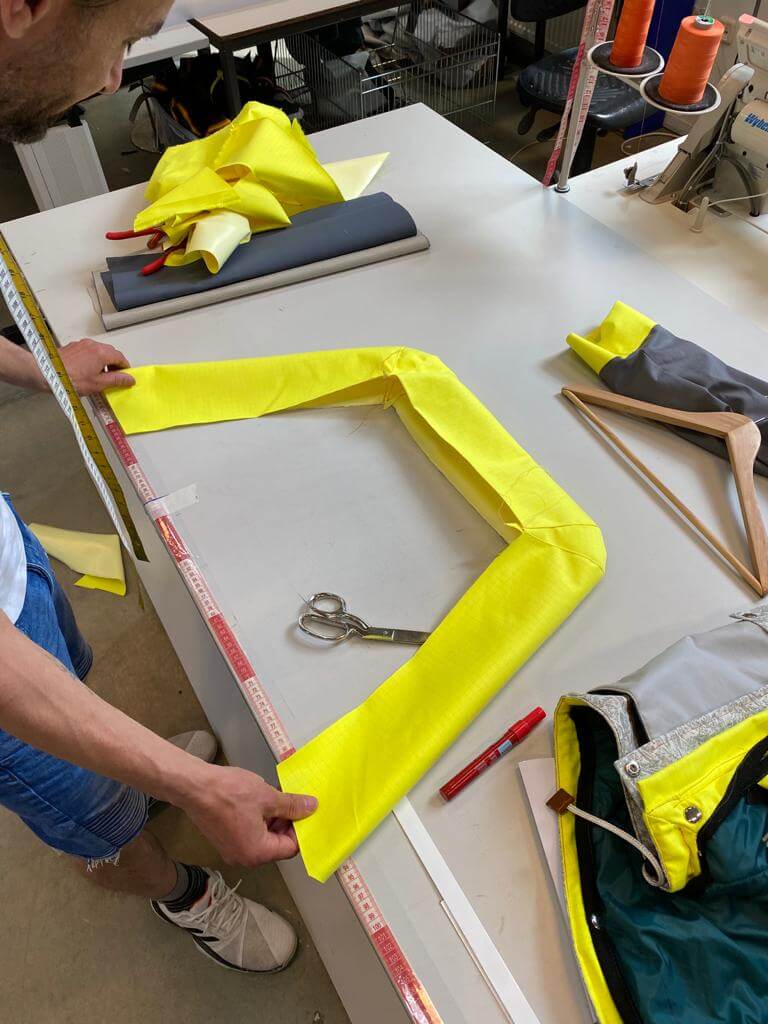
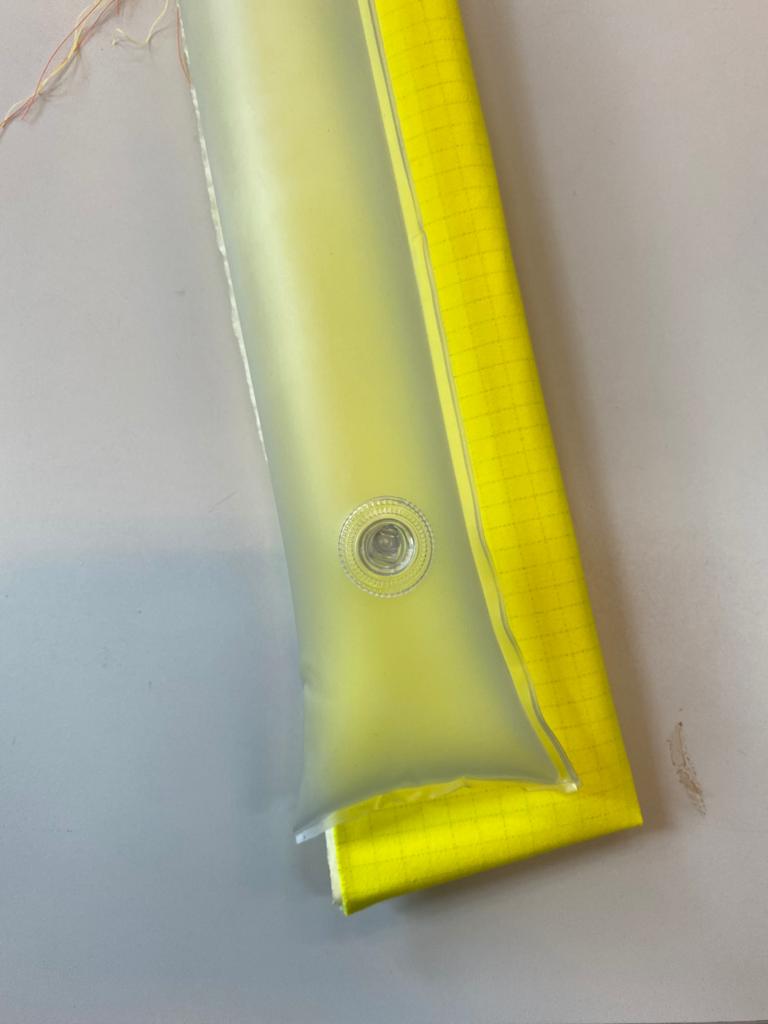

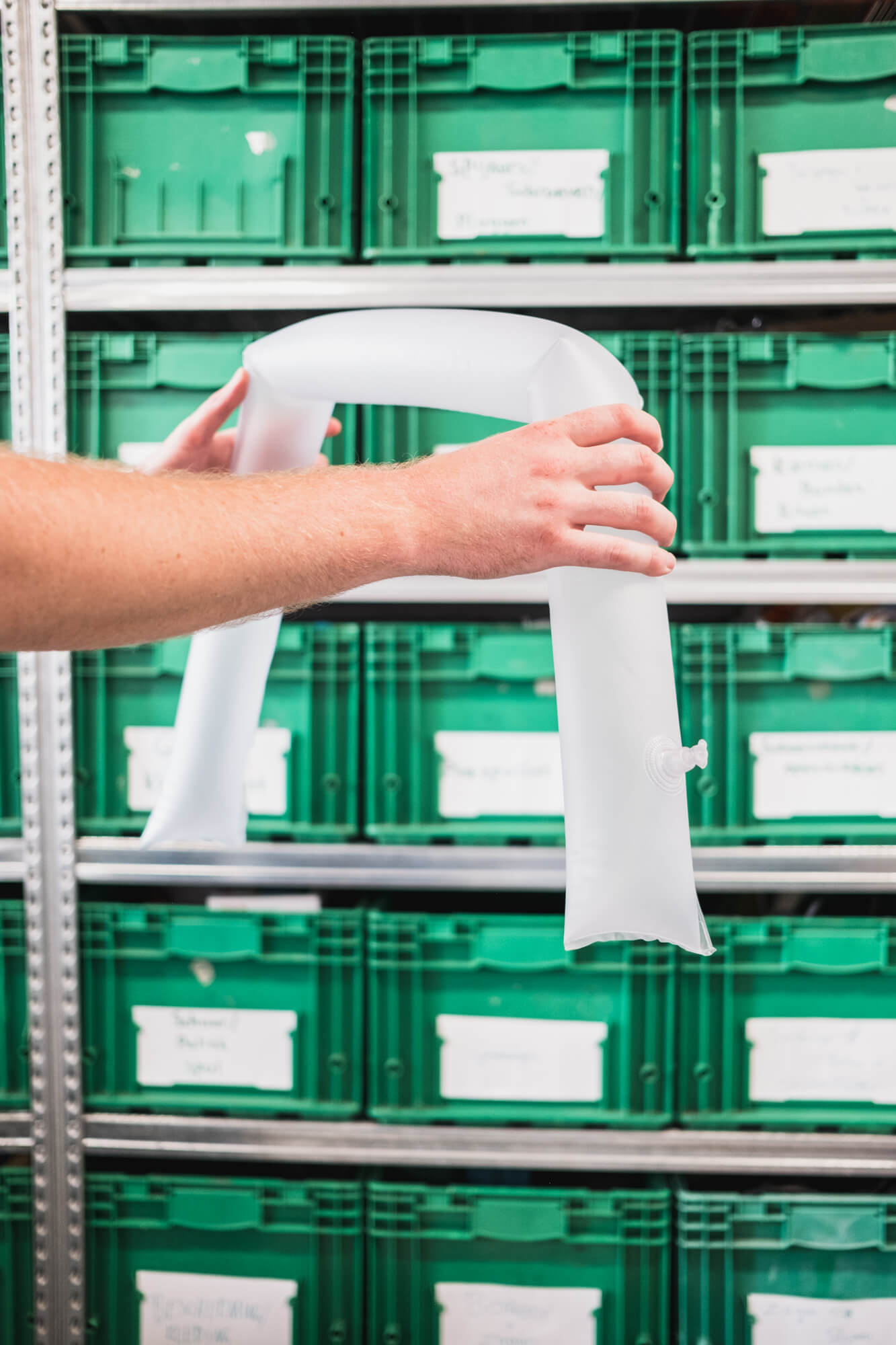

The pocket
Keeping your belongings safe is one of the most important challenges when living on the streets. When you have to move from place to place throughout the day, whether it is to get food, services, or to work, having an efficient storage system is crucial. Joris designed the pocket to be bigger, sturdier, and safer. This is also where we keep the folded tentpole.
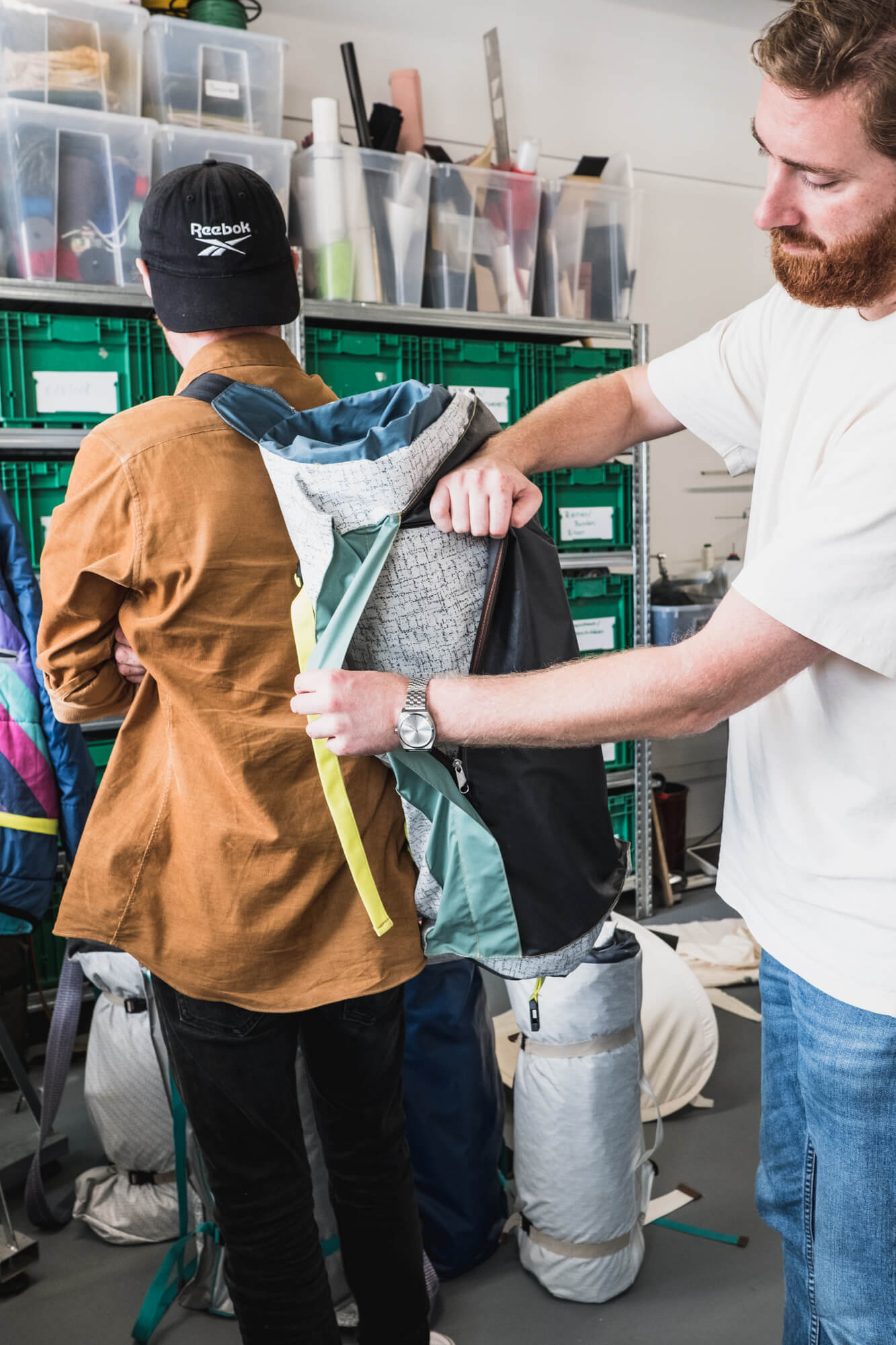
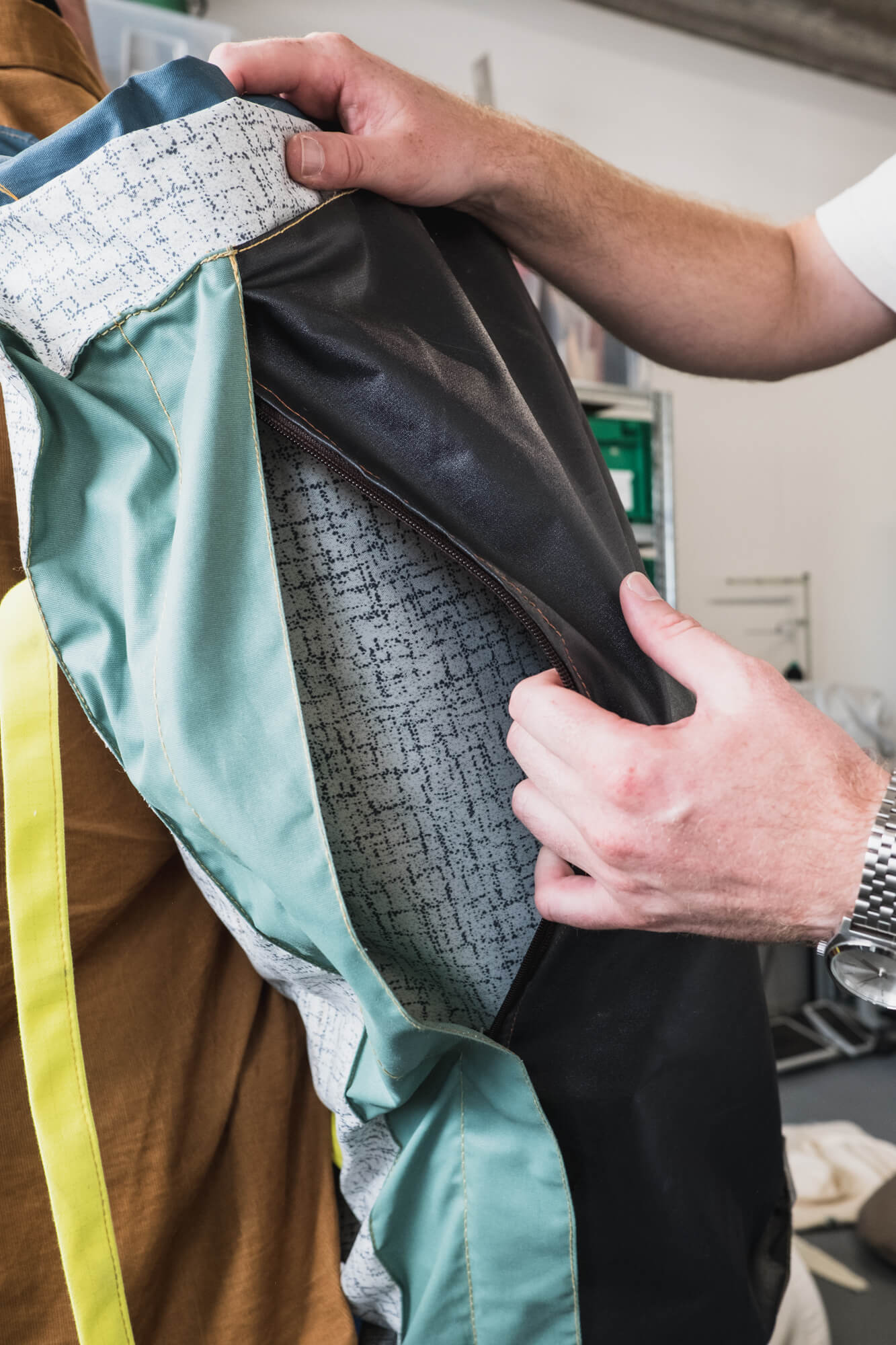
Waterproof but breathable
We initially thought that it was especially important that the Shelterbag is waterproof and that no water can get in anywhere.
“But now we know, it should also be very breathable. Otherwise, it will have a suffocating effect, preventing the moisture inside from escaping and causing hypothermia.”
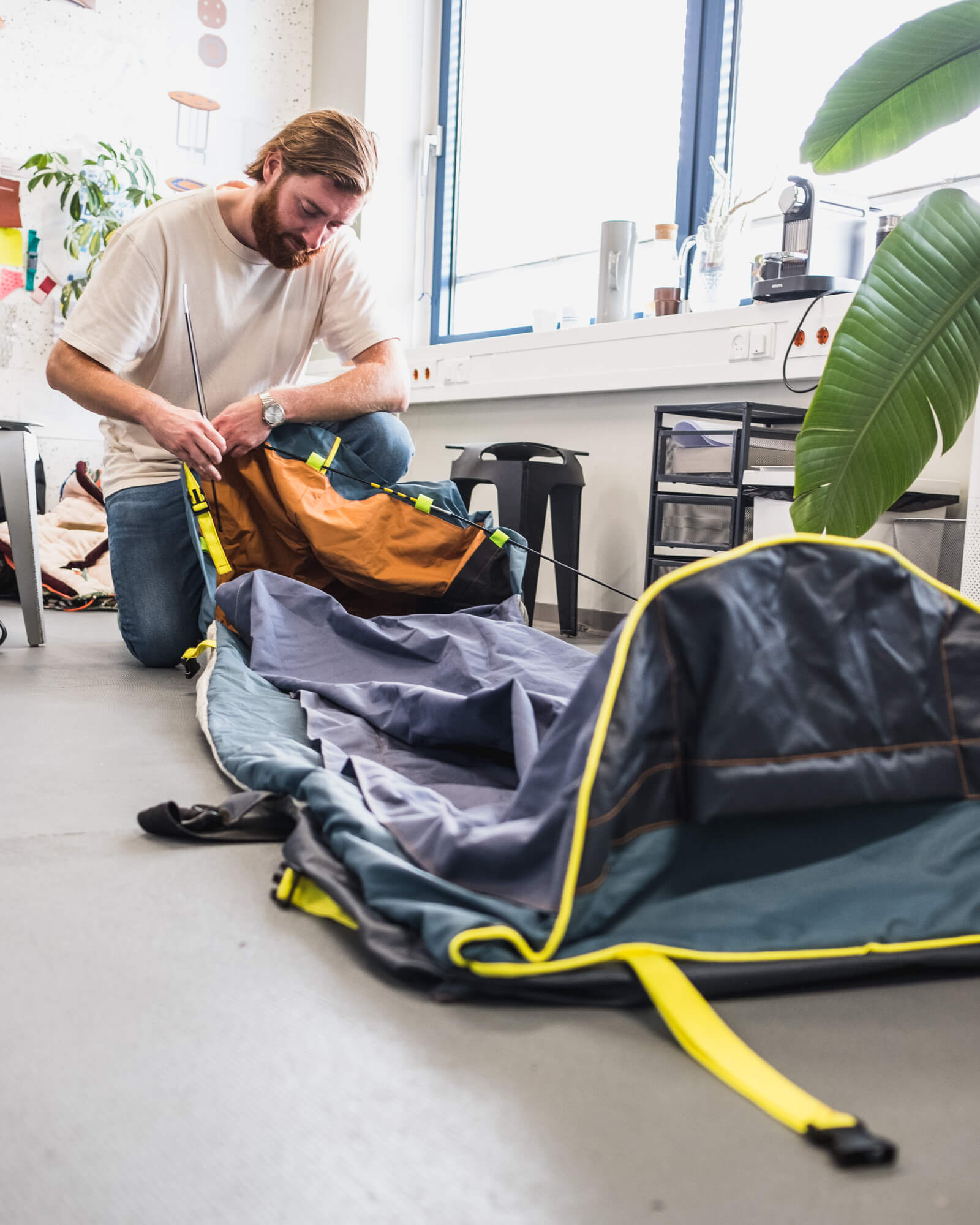
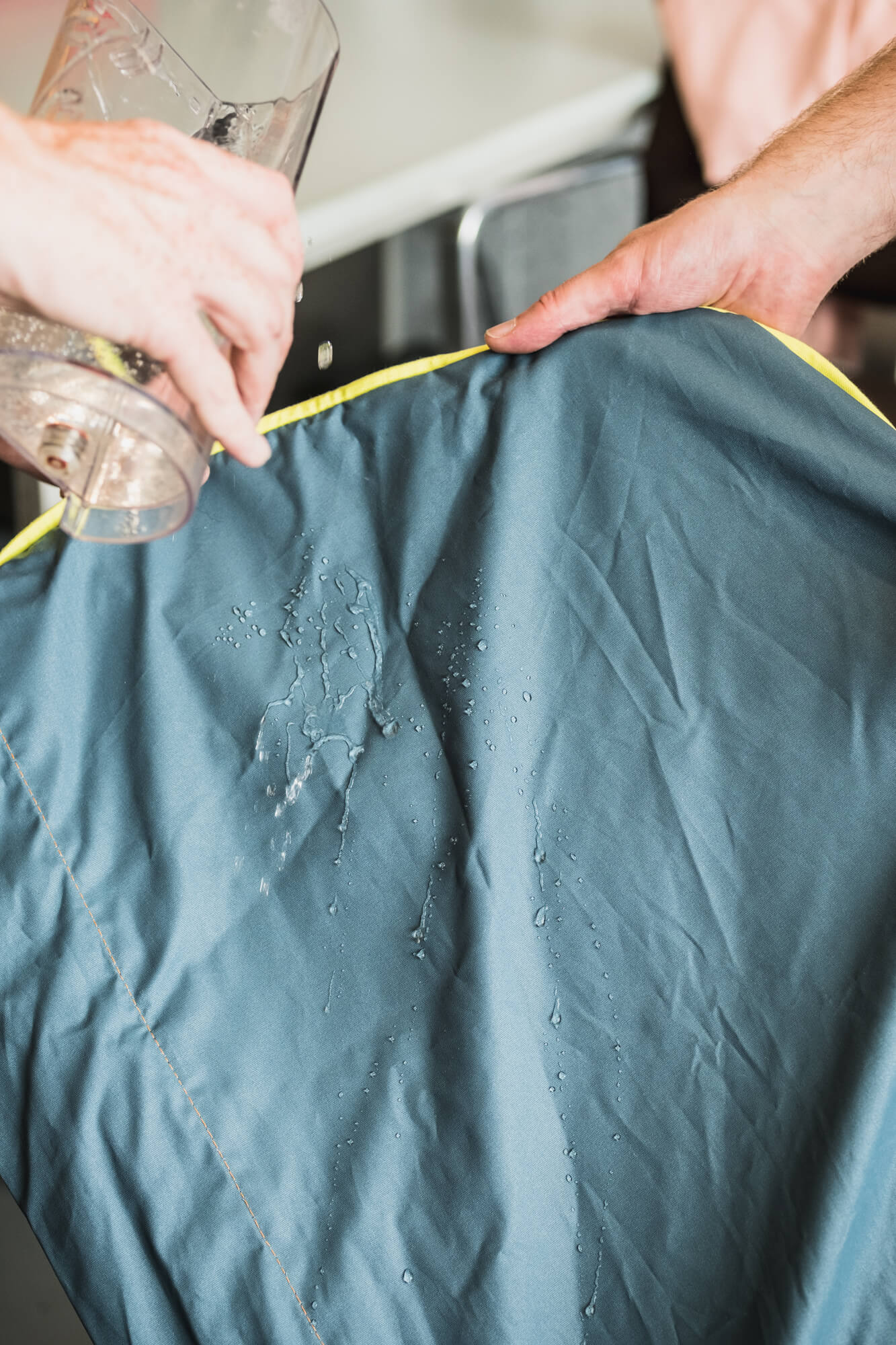
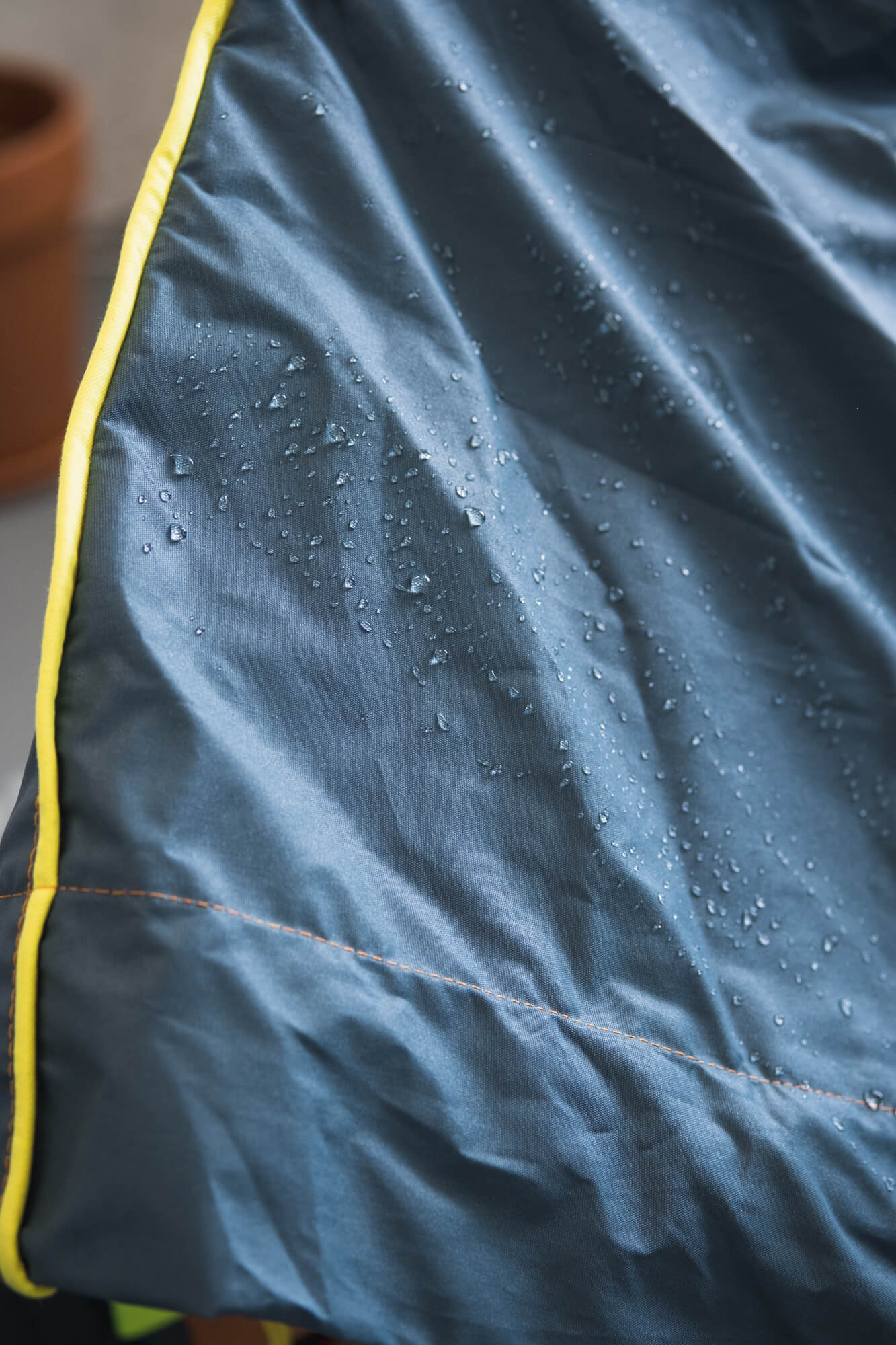
Auping matres
Joris approached Auping to see if we could do something for each other.
“Then we heard about their circular mattress, where they take mattresses back to recycle for a new mattress. Then we realized, we can use those mattresses as a kind of ‘intermediate station’ in our Shelterbag. An extra step that, apart from some production time, costs nothing. And in this beautiful way, it can be used for people experiencing homelessness.”

